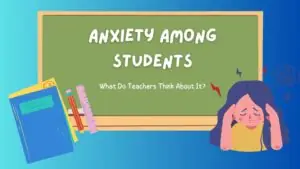
The U.S. Department of Education is clearing $39 billion worth of federal student loans. This major move towards debt relief is going to help more than 800,000 people who borrowed money for their education. The decision comes after it was found that there were lots of mistakes made by the companies responsible for managing these loans. These errors happened over a long period of time and were connected with payment plans based on the borrower’s income. By taking this step, the department is fixing these past mistakes and making sure that people who should have their loans forgiven, actually get this relief.

✅ AI Essay Writer ✅ AI Detector ✅ Plagchecker ✅ Paraphraser
✅ Summarizer ✅ Citation Generator
Key Takeaways:
- The U.S. Education Department cancels $39 billion in student debt, affecting over 800,000 borrowers.
- The move seeks to fix past mistakes by loan servicers in administering income-driven repayment programs.
- Debt elimination aims to provide targeted relief to defrauded students and struggling borrowers.
- Borrowers should carefully consider their financial situation before choosing between income-driven and standard repayment plans.
- The federal government continues to explore measures to reduce the financial burden of student loans.
The Debt Elimination Initiative
The initiative by the Education Department aims to rectify past administrative blunders made by federal loan servicers when collecting payments under income-driven repayment programs. These mistakes have resulted in many borrowers falling behind by years in their quest to pay off their loans. Miguel Cardona, the education secretary, emphasized the urgency of the situation:
“For far too long, borrowers fell through the cracks of a broken system”
The action follows a recent Supreme Court ruling that struck down President Biden‘s plan to cancel $400 billion in student loan debt, arguing the president lacked the authority to eliminate debts on such a large scale without explicit congressional authorization. The $39 billion debt elimination, however, falls within the education secretary’s jurisdiction and has been widely received without legal disputes.
According to the Education Briefing, this debt cancellation process will occur in the next few weeks as part of the Biden administration’s plan to address the problem of servicers’ mistakes. Furthermore, it will automatically and retroactively credit millions of borrowers for late or partial payments and for lengthy periods spent in forbearance prior to the pandemic.
Identifying and Rectifying Servicer Mistakes
The Education Department has identified so-called “forbearance steering” as a significant issue. Low-income borrowers, who could qualify for monthly bills of $0 through income-driven payment plans, were often inappropriately placed on forbearance by loan servicers. While this approach kept loans in good standing, it allowed for the accrual of interest, exacerbating the financial situation for struggling borrowers.
In fact, the Consumer Financial Protection Bureau sued Navient, a prominent loan servicer, over such tactics in 2017, a case that continues to date. This case underscores the systemic issues in the management of federal student loans by loan servicers, which have plagued borrowers for years. The Department’s latest move is a significant stride towards rectifying these past mistakes and providing targeted relief to defrauded students.
Income-Driven Repayment vs. Standard Repayment: Which Is Better?
Income-driven repayment (IDR) plans and standard repayment plans offer distinct benefits and drawbacks. IDRs tie monthly federal payments to borrowers’ income and family size, potentially making repayment more manageable. After 20 to 25 years of payments, any remaining debt is forgiven under this plan. However, IDRs may result in a higher total payment over time, as interest continues to accrue.
On the other hand, standard repayment plans involve fixed monthly payments over a ten-year period. Although monthly payments may be higher, the total paid over the term is typically less, due to a shorter repayment period. The choice between IDR and standard repayment largely depends on the borrower’s financial situation, their long-term financial goals, and their ability to make consistent payments.
| Income-Driven Repayment (IDR) 🌈 | Standard Repayment 💼 | |
|---|---|---|
| Pros | 1. Monthly payments are based on income and family size, making it more manageable for some borrowers.👨👩👦 2. Loan forgiveness after 20-25 years of repayment. 🎁 | 1. Lower total payment over the life of the loan due to shorter repayment period. 💰 2. Fixed monthly payments, making budgeting simpler. 💹 |
| Cons | 1. Higher total repayment over time due to accrued interest.💸 2. Requires annual income documentation. 📑 | 1. Higher monthly payments, which may be difficult for those with lower income. 💵 2. No loan forgiveness option. ❌ |
The Education Department’s move to cancel $39 billion in student loans marks a significant step in rectifying past servicer errors, offering much-needed debt relief to over 800,000 federal loan borrowers. As the federal government seeks to alleviate the financial burden of student loans, borrowers are reminded to consider the advantages and disadvantages of different loan repayment programs to make informed decisions about their debt.
Also read:
Do Low Grades in Law School Always Mean Failure?
American Confidence in Higher Education Plummets, Reveals Gallup Poll
Building a New Foundation for Math Education in America According to the People
Follow us on Reddit for more insights and updates.





Comments (0)
Welcome to A*Help comments!
We’re all about debate and discussion at A*Help.
We value the diverse opinions of users, so you may find points of view that you don’t agree with. And that’s cool. However, there are certain things we’re not OK with: attempts to manipulate our data in any way, for example, or the posting of discriminative, offensive, hateful, or disparaging material.